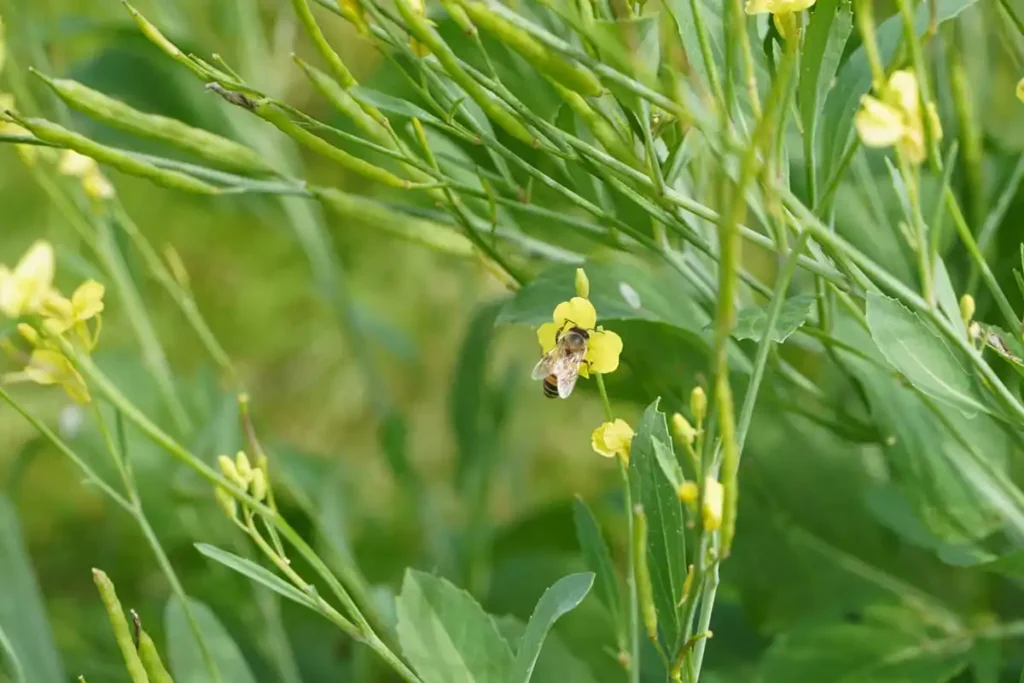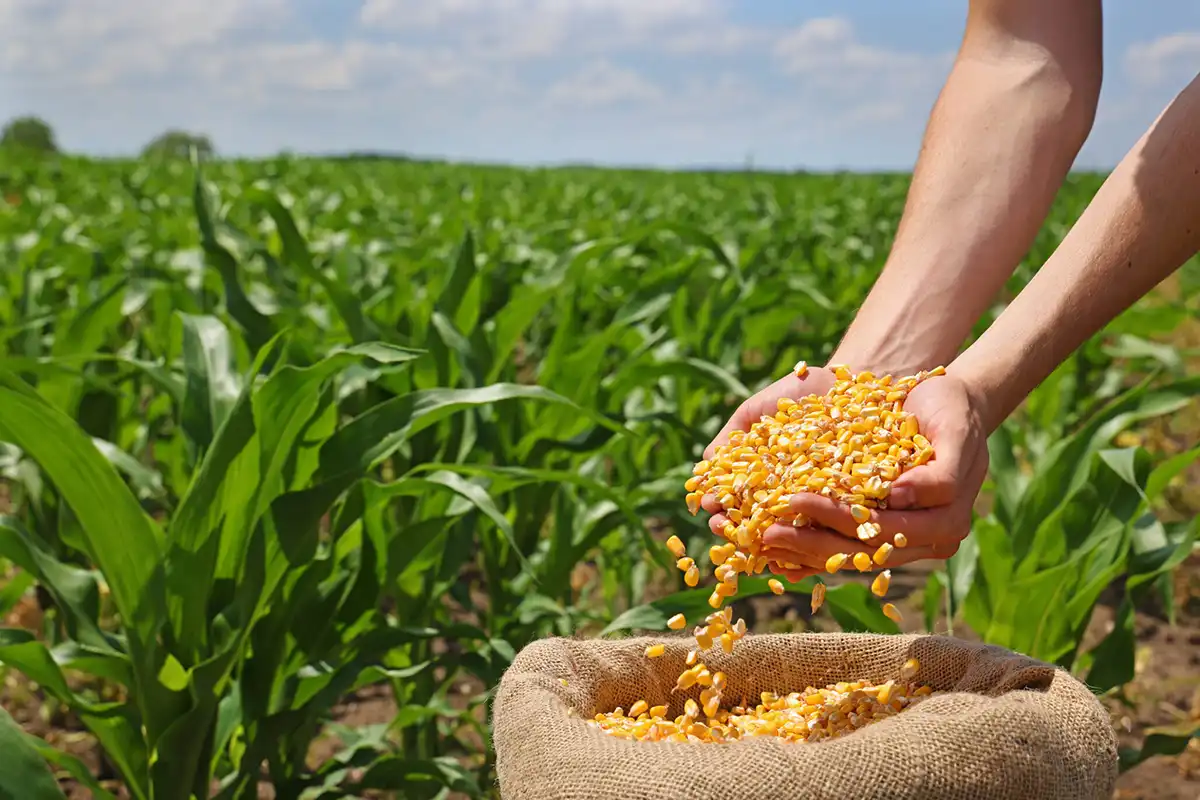As demand rises for biofuels, plant breeders are working hard to increase biofuel feedstocks’ productivity and biofuel’s sustainability.
Years ago, some doubted that biofuels could be a viable industry, let alone a thriving one. While questions about biofuel’s role still exist, infrastructure development and plant breeders’ efforts during the past decade have put biofuels on the map in various transportation sectors.
The main biofuel crops include starches like corn and sorghum, oilseeds such as soybean and canola, and sugar crops — primarily sugarcane and sugar beet. Fermenting sugar and starch-based crops produces bio-alcohols like ethanol, while oils undergo processing and blending to create biodiesel and renewable aviation fuel.
Biofuel’s impact hinges on its ability to replace fossil fuels, a metric that continues to steadily rise. According to the U.S Energy Information Administration, the United States produced 17.5 billion gallons and consumed about 16.8 billion gallons of biofuels in 2021. Though the last couple years have had a dip in production and consumption owing largely to the global pandemic, both production and consumption have been on a general upward trajectory since the biofuel market began in the 1980s. Ethanol, which is blended with petroleum gasoline for use in vehicles, accounted for 85% of U.S. biofuel production and 82% of consumption in 2021.
Biofuels contribute to reduced greenhouse gas emissions across multiple stages of the production process, according to the U.S. Environmental Protection Agency (EPA). Their impact towards sustainability increases further when producers grow feedstock crops on marginal land and/or use waste crop biomass as biofuel feedstock while retaining the highest value grain or oilseed for uses in food products or livestock feed. Also significant, biofuels support sustainability by reducing a country’s need for imported fossil fuels.
Even with these existing sustainability benefits, the biofuel industry remains committed to further enhancing sustainability. Due to the limits of available farmland globally, expanding feedstock crop biomass volume is challenging. Therefore, breeding crops for higher yields to obtain more fuel from each acre is critical to maximizing sustainability. For oilseeds like canola, the oil profile also matters.
Canada leading in canola
Canada is the world’s largest producer of canola, growing more than 25% of the global supply and leading the world in exports. In Canada, canola has had biofuel-use as a breeding focus from the crop’s earliest days. Curtis Rempel, the Canola Council of Canada’s vice president of crop production and innovation, says some producers dedicate some acreage to biofuel production.
“We have rising North American demand and, although it’s not much now, we expect to be shipping more canola oil to Europe in future,” Rempel explains. “Europe has historically grown quite a bit of rapeseed and now canola is also grown there for biofuel, but with the European Union banning neonic insecticides a few years ago, their yields are down. So, we expect that their imports of canola oil from North America for biofuel use will increase quite substantially.”
Today’s industrial canola varieties still contain high levels of erucic acid, similar to their ancestors and to rapeseed, which was grown in Canada during World War II to make lubricant oil for engines in naval ships. Rempel says demand for canola oil as a blending agent in biodiesel and aviation fuel is growing.
Meanwhile, in North America, the Manitoba and Canadian federal governments announced in June CAD$2.9 million in funding for Azure Sustainable Fuels to do an engineering design study for a sustainable aviation fuel plant near Portage la Prairie, Manitoba. Also in June, Canada’s first stand-alone renewable diesel refinery, a CAD$380M refinery in British Columbia, completed construction. The Tidewater Renewables-owned facility will use canola, tallow and tall oil to produce more than 170 million liters of biofuel a year. The renewable diesel will produce 80% to 90% less carbon emissions compared to fossil fuel diesel.
In addition, four companies — Ceres, Viterra, Richardson and Cargill — are building canola crushing plants in Saskatchewan. Rempel attributes that substantial increase in crushing capacity to rising biofuel demand.
“To meet this demand, we’ve had the strategy to increase yields and not acreage, and breeding for yield increase will continue,” he adds. “But also ultimately, over the next decade, we’ll see the results of breeding for increased segregation of oil profiles for all three canola end uses: food, feed and fuel.”
On the canola oil profile developments achieved so far, Rempel says, “We already have the high-oleic profiles that have a huge food market, and lower-oleic for livestock feed, as well as omega fatty acid profiles being developed to replace marine fish oils for farming salmon. We still have high-erucic acid canola grown for industrial oil manufacture, so we have a great foundation to build on with a lot of variability in oil profiles to choose from. And gene editing tools make breeding much faster.”
Rempel says time will reveal whether the ideal canola oil profiles for renewable diesel and aviation fuel significantly differ from the ones currently available.
“The big breeding companies and some smaller firms as well as several Canadian and U.S. universities, private institutions and government breeders are all working on this,” he says. “It’s an exciting time for canola and biofuel.”
Canada is not the only country with opportunity in canola. In the Southern U.S., Corteva announced a collaboration in March with Bunge and Chevron Ag Renewables to introduce proprietary winter canola hybrids, primarily for the growing domestic renewable fuels market. Growers will use these hybrids as a double-cropping system following soybeans or cotton.

Growing Feedstock Over Winter
One exciting way to boost the sustainability of biofuels is to grow biofuel feedstock crops as cover crops. Cover crops help improve soil health, reduce erosion and provide multiple other benefits. Introducing biofuel cover crops could provide an additional source of revenue for farmers while boosting biofuel feedstock production.
Justin Ingalls, commercial sales lead for Nuseed in North America, says the company introduced its first carinata hybrid with improved frost resilience for cover crop cultivation in a southern U.S. winter cycle.
The world’s first carinata hybrid, introduced by Nuseed in 2022, offers agronomic resilience, high yield potential and nitrogen use efficiency. In terms of biofuel opportunity, the hybrid offers a consistent oil content (percentages in the mid-40s), Ingalls says, and comes with built-in ‘certified sustainable’ contracts from Nuseed. This is just the first hybrid offering from a rich global R&D pipeline, says Ingalls, who adds that the potential for further breeding advancements is high.
Rabobank estimates there are 170 million hectares of existing farmland in Europe and the Americas that could benefit from cover cropping.
“Nuseed estimates that by planting just 1.5% of that estimated existing cropland to non-food Nuseed carinata has the potential to annually produce 1 billion gallons of sustainable aviation fuel from 2030 and the potential to annually remove 8 million metric tons of CO2,” Ingalls says.
Nuseed is currently scaling sustainable carinata contract production in both South America and the Southern U.S., with development programs underway in Europe and Australia.
Maximizing Each Ounce
Scientists like Ryan Stoklosa, research chemical engineer and lead scientist of the Sustainable Biofuels and Co-Products Research Unit at the U.S. Department of Agriculture Agricultural Research Service (USDA ARS), are also looking for opportunities to boost biofuel’s sustainability. His team is exploring methods to maximize ethanol yield from every ounce of corn grain or other form of plant biomass.
“This strategy also leads us to research processing options to develop a more favorable fermentation process that can best utilize these sugars in current corn ethanol mills,” he says. “To do this, we are looking at incorporating other fermentable sugars from corn fiber or the remaining corn stalks after harvest into ethanol fermentation.”
The corn wet-milling process removes corn fiber from the grain, explains Stoklosa, and since this component is enriched in carbohydrates, the process can recover and reincorporate the fiber ethanol fermentation. In a similar way, scientists can collect and chemically pre-treat the remaining corn stalks, allowing the polysaccharides within the plant cell wall to be more amenable for deconstruction to fermentable sugars. That also enables this plant fraction to be incorporated during ethanol fermentation with corn grain.
In terms of how breeding can help, Stoklosa says that corn and soybean breeders should focus on higher yields. So too, he says, should breeders of less-common grains that could play a role in improving biofuel production, such as grain sorghum, barley or hemp. The effort can’t end with breeders, however.
“This effort should not be left to breeders alone but should also include agronomists to entice farmers and other stakeholders to the potential benefits of growing these crops, not only for the biofuel industry, but also for the potential co-products that can be generated for a wider range of industries,” he says.
Stoklosa sees the generation of co-products as a viable way to improve the overall process economics of biofuel production.
“The corn ethanol industry greatly benefits by generating co-products in the form of corn oil, corn gluten and dried distillers’ grains with solubles as a way to make ethanol production more profitable,” he says. “Our project still looks to identify ways to generate or utilize other types of value-added co-products that come from using cellulosic agricultural residues for biofuel production. This includes capturing CO2 produced during ethanol fermentation and repurposing it for use in our chemical pre-treatment process performed on the cellulosic material. We have also performed research into recovering and characterizing lignin that is removed during chemical pre-treatment.”
Measuring Potential
The U.S. could produce roughly 1 billion tons of biomass (roughly 1,042 million dry tons) by 2030, which could theoretically displace 9.5% of fossil fuel-based energy and reduce 446 million tons of CO2-equivalent emissions each year, according to a report called ‘An Assessment of the Potential Products and Economic and Environmental Impacts Resulting from a Billion Ton Bioeconomy’ published in the energy journal BioFPR.
Stoklosa says that is one promising finding developed by the U.S. governmental agencies and a range of industry experts. However, to achieve this will require improved logistics and infrastructure to better support the growing, harvesting, transporting and conversion of crop biomass, he says.
Steven King, Corteva Agriscience global research director for seed product development for canola, wheat, sorghum and alfalfa, says annual biofuel demand will be 8 billion gallons by 2030. To keep up with growing demand, King says raising harvestable yield levels and intensifying cropping systems are already happening.
King says it bodes well for future yield advancements that new gene editing tools are in development, and that great progress has already been made. He notes that breeders have been very successful at continually increasing the yield potential of both main biofuel crops — corn and soybeans — despite variable weather patterns in recent years.











